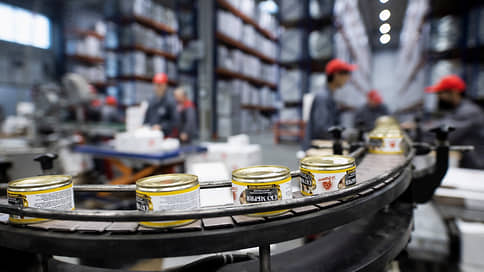Manufacturers of canned fish note an increase in product prices
[ad_1]

High consumer demand against the backdrop of a reduction in supply has caused the price of canned fish made from Pacific sardines (ivashi) to rise by 23–25% from October 2023 to March 2024, producers say. According to them, the price increase is also due to an increase in exports to China, rising production costs and higher transportation costs. Experts predict a relatively stable growth trajectory and even see prices for canned fish falling towards the end of 2024, although they warn of a potential decline in pink salmon catches.
Kommersant has obtained a study by a canned fish manufacturer, Russian Fish World, from which it follows that from October 2023 to March 2024, Pacific sardine (ivashi) became the absolute leader in price growth among canned fish products. During this period, prices for such products increased by 23–25%. For comparison, canned food from:
- herring prices increased by an average of 12–15%,
- mackerel – by 8–10%,
- pink salmon – by 6–7%;
- Atlantic sardine – by 4–5%;
- saury – by 1.5–2%.
The Russian Fish World believes that the significant increase in the price of canned iwasi is due to the increasing demand for both fresh fish and canned fish, as well as a reduction in supply on the domestic market due to increased exports. The increase in prices for canned herring is caused by a decrease in raw material reserves. According to the All-Russian Association of Fisheries (VARPE), in 2023, the catch of aquatic biological resources amounted to 5.3 million tons, including iwasi – 543.9 thousand tons, and herring – 396.1 thousand tons.
The Analytical Center of the Fisheries Union said that in the second half of 2023 they also noticed a significant increase in price, for a number of items – up to 100% of the minimum price. They calculated that the average monthly price for iwasi in Moscow in June 2023 was 45 rubles. per kg, and by January 2024 increased to 92 rubles. per kg.
Managing Director of Dobroflot Group of Companies Alexander Efremov connects the increase in prices for canned willow with the growing demand for frozen sardines in China, which is caused by the unique natural phenomenon of El Niño in Latin America.
According to the expert, a sharp decline in anchovy catches in Peru and Chile has led to rising prices for fishmeal and especially fish oil. To adapt, Chinese processors have turned to purchasing and using Russian frozen sardines to produce protein feed, the expert explains.
The President of the Association of Fishing Fleet Shipowners, Alexey Osintsev, notes a significant increase in all components of the cost of fish products, including fuel prices, wages for fishermen, transport costs, tax payments and the introduction of export duties. Executive Director of the Association of Industrial and Trade Enterprises of the Fish Market, Alexander Fomin, explains the rise in prices by rising inflation and fluctuations in transportation prices, amounting to approximately 35–40 rubles. per kg, or 10 rubles. for one can of canned food.
The Fishing Union believes that high prices for raw fish most often lead to a decrease in demand for it from market participants, after which fish in wholesale prices becomes cheaper.
They also add that wholesale prices for fish are volatile and already in February 2024, many of them began to decline.
VARPE President German Zverev believes that the information about the price increase is not true, as it is based on limited information about one-time transactions. Alexander Efremov predicts a decline in prices for sardines in the second half of this year, explaining price fluctuations as a temporary circumstance. The Russian Fish World hopes for catches in 2024, but does not expect prices to decline before May. The Fishing Union adds that the current increase in wholesale prices for raw materials “does not create risks for a sharp increase in the price of canned food,” which will most likely remain within the limits of general food inflation.
Overall, a relatively stable growth trajectory of 4–5% per year is expected, but forecasts indicate a potential halving of pink salmon catches year-on-year in 2024, concludes Mr. Fomin.
[ad_2]
Source link





